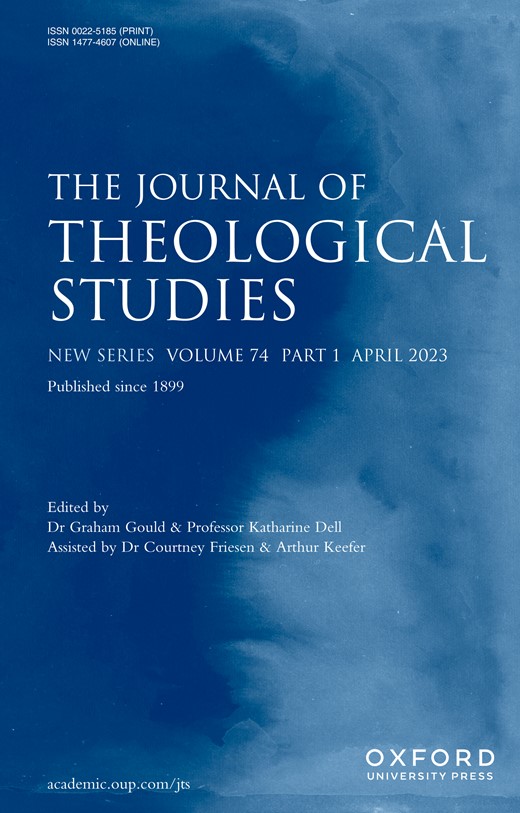-
Views
-
Cite
Cite
Nicholas J Zola, Tatian’s Diatessaron: Composition, Redaction, Recension, and Reception. By James W. Barker, The Journal of Theological Studies, Volume 74, Issue 1, April 2023, Pages 376–381, https://doi.org/10.1093/jts/flac146
Close - Share Icon Share
Extract
Scholars have long been enticed by Tatian’s now-lost Diatessaron, a second-century harmonized gospel, for its potential to grant access to a fourfold gospel text that predates most surviving manuscripts. The impasse has been that reconstructing the Diatessaron has involved comparing multiple witnesses across several languages without a clear consensus of their priority or value. James Barker has produced a groundbreaking study that elevates research on the relationships between Diatessaronic witnesses to a new level of understanding. With a title that echoes William Petersen’s defining 1994 monograph, Tatian’s Diatessaron: Its Creation, Dissemination, Significance, and History in Scholarship (Brill), Barker drives the field beyond Petersen’s generation of scholars focused primarily on the reconstruction of Tatian’s wording. Instead, Barker concentrates on reconstructing Tatian’s sequence, and thereby produces a revolutionary new stemma of Diatessaronic witnesses based on better evidence than any heretofore (p. 118; but see my caveat below). Barker’s work permanently alters the direction of the field.



